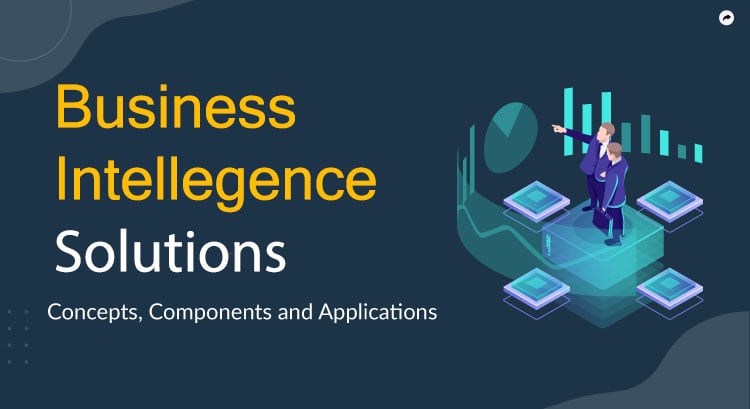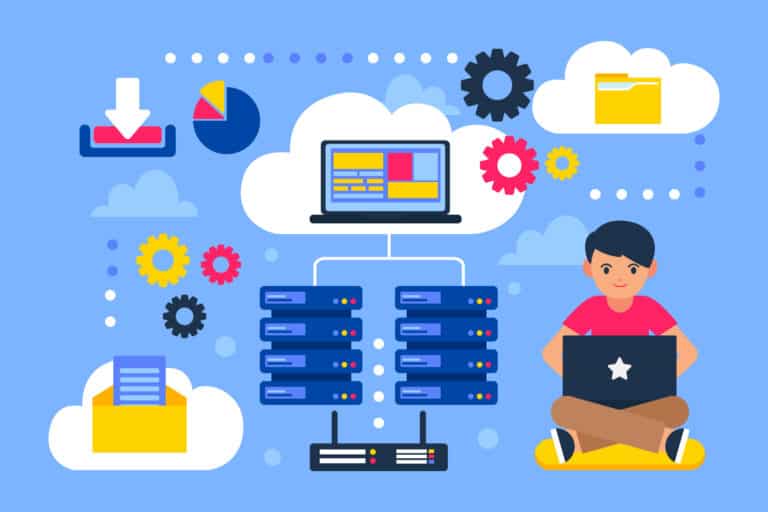How to Develop Custom Business Intelligence Solutions That Drive Better Decisions
In the information age, data reigns supreme. But raw data itself is simply a means to an end; the true power lies in the way we interpret, analyze, and leverage it. This is where Business Intelligence (BI) steps in – a transformative tool that can revolutionize your organization’s approach to data analysis and decision-making. The right BI solution can be a game-changer, turning your vast swathes of data into clear, actionable insights. But what if you could take this one step further? What if you could have a BI solution that is not just a tool, but a tailor-made extension of your business ethos and strategy?
[fluentform type=”conversational” id=”7″]
This is where custom Business Intelligence solutions come into the picture. Off-the-shelf platforms, although useful, often impose certain limitations, hindering your business from unlocking its full data potential. Custom BI solutions, on the other hand, are designed with your specific needs, objectives, and nuances in mind. They offer a degree of flexibility, precision, and uniqueness that is hard to find elsewhere.
In this comprehensive guide, we explore the landscape of custom BI, diving deep into its myriad benefits, distinctive features, and development process. Additionally, we also delve into essential aspects such as integration, enhancement, and evaluation, ensuring you have all the information you need to make an informed decision about adopting custom BI solutions.
Overview
Imagine an off-the-shelf BI tool as a ready-made suit. Sure, it can be a good fit for many, but there will always be areas where it pinches or hangs loose. A custom BI solution, by contrast, is like a bespoke suit, crafted with careful attention to your precise measurements and preferences.
In this article, we take you through the journey of creating this ‘bespoke suit’ for your business. We’ll cover:
- How custom BI solutions can offer unique insights into your data, way beyond the reach of standard BI tools.
- The advantages of custom BI solutions, including the enhanced flexibility, scalability, and user-centric design they offer.
- The nitty-gritty of developing custom BI solutions, from conceptualization to deployment and everything in between.
- The nuances of integrating custom BI solutions into your existing system, including the challenges you might face and how to overcome them.
- The potential for enhancing your custom BI tool post-development, and how to evaluate its performance to ensure it delivers as promised.
Whether you’re a fledgling startup looking to make data-driven decisions or a well-established firm seeking to upgrade your data analysis, this guide will provide you with an expert perspective on the how’s and whys of custom BI solutions.
And remember, our team at PCApps is always ready to offer a free review of your project, guiding you on the path to unparalleled data intelligence. When it comes to developing a BI solution that truly aligns with your business needs, why settle for less when you can have the best? Reach out to us today, and let’s start building a data future that drives better decisions.
Unleashing the Potential: Overcoming Limitations of Pre-made BI Platforms
The age of data-driven decision-making has necessitated the adoption of Business Intelligence (BI) platforms across organizations of all sizes and sectors. Standard off-the-shelf, pre-made BI platforms have made data analysis more accessible and efficient. They provide a base level of insights that can power informed decisions and help businesses stay competitive in their respective markets. However, as organizations delve deeper into advanced analytics, they often bump into the limitations of these off-the-shelf solutions.
Standard BI tools usually come with pre-set functionalities and features designed to cater to the broadest possible range of businesses. While this generalized approach works well for basic and intermediate analytics, it often falls short when dealing with unique business needs, complex data structures, and advanced analysis. There’s a one-size-fits-all aspect to these tools that restricts their flexibility and scalability.
Moreover, these standard BI platforms sometimes lack the capability to effectively handle and process massive data volumes or integrate seamlessly with niche or legacy systems. The user experience is typically not customizable, meaning the platform may not align with your team’s workflow or preferences, leading to reduced productivity and user adoption.
It’s in overcoming these limitations where custom BI solutions shine. They are crafted precisely to your organization’s requirements, helping you squeeze every drop of value from your data. They offer the flexibility to integrate with any system, the scalability to handle any data volume, and the customizability to fit seamlessly into your team’s workflow. This understanding forms the foundation for our deep dive into the world of custom BI solutions.
The Advantages of Custom BI Development
Just as a custom-made suit fits better than one bought off the rack, a custom BI solution can fit your business needs far more snugly than a standard, pre-packaged platform. Tailoring your BI tool to match your unique requirements opens a new world of benefits and possibilities that give you a competitive edge.
Firstly, a custom BI solution speaks your business language. It’s developed with your specific goals, strategies, and challenges in mind, making the solution a better fit for your workflows, processes, and culture. This results in enhanced user adoption and productivity, as your team won’t have to wrestle with a tool that feels alien to them. The user interface and experience are designed to be intuitive, making the solution more accessible and enjoyable to use.
Moreover, a custom BI tool is flexible and scalable. As your business evolves, so can your BI tool. Whether you’re integrating new systems, tackling larger data volumes, or adding new analysis features, your custom solution can adapt and grow in lockstep with your business.
Lastly, but perhaps most importantly, custom BI solutions offer personalized insights that pre-made platforms simply can’t match. With a tool designed around your specific data structures and analytic needs, you can delve deeper into your data, uncovering insights that could remain hidden with a standard platform. This enhanced level of insight can power smarter decisions, helping you outmaneuver competitors and seize new opportunities.
In a world where data is the new oil, a custom BI solution acts as your personalized refinery, extracting maximum value from your raw data. The benefits are clear – custom BI solutions are not just an investment in your present but a powerful tool for shaping your business’s future.
Illuminating Your Data: How BI Enhances Business Understanding
Every byte of data in your business holds a story, waiting to be told. It contains hidden patterns and trends, insights and implications that can enlighten your business understanding. A well-implemented Business Intelligence (BI) solution is like a skilled narrator, capable of transforming these raw data stories into insightful narratives that drive informed decision-making.
Through a combination of data mining, processing, and advanced analytics, a BI solution can unravel the hidden threads in your data, highlighting patterns, trends, and correlations that might have been overlooked otherwise. This can range from identifying customer purchasing behaviors and pinpointing operational inefficiencies to uncovering market trends and recognizing revenue generation opportunities. The power of BI is its ability to draw meaningful conclusions from a sea of data, providing you with an aerial view of your business landscape.
But it’s not just about recognizing these trends – it’s about understanding their implications and acting on them. This is where the comprehensive data analysis offered by BI tools comes into play. By integrating data from various sources and providing an intuitive interface to interact with this data, BI tools allow you to make sense of complex datasets and make informed, data-driven decisions.
A custom BI tool enhances this further by providing analytics and reports that are specifically relevant to your business, cutting through the noise and focusing on what truly matters to you. In this way, custom BI solutions act as both a magnifying glass and a compass, highlighting the fine details in your data and pointing your business in the right direction. Embracing this level of data enlightenment can empower your business, enabling you to make decisions with confidence and precision.
Crafting Your Custom BI Solutions: Different Approaches
Developing a custom Business Intelligence (BI) solution is akin to crafting a masterpiece; it involves careful planning, creative design, and meticulous execution. It requires a deep understanding of your business needs, workflows, and data structures. Moreover, it demands a forward-thinking approach, ensuring that the solution is scalable, flexible, and able to adapt to your future growth and changes.
One of the key areas where custom BI solutions shine is data visualization. Pre-made BI platforms may offer generic graphs and charts, but custom solutions can deliver visualization precisely tailored to your data and analysis needs. This allows you to represent complex data in a clear, intuitive, and insightful way, facilitating better understanding and faster decision-making. Whether you need detailed Gantt charts for project management, heat maps for geographical sales data, or real-time dashboards for monitoring KPIs, your custom solution can incorporate it all, offering a level of clarity that is hard to achieve with standard tools.
Another significant advantage of custom BI solutions is their capability to integrate multiple data sources. In today’s business world, data is often scattered across various systems, from CRMs and ERPs to social media analytics and third-party databases. Collecting and unifying this data into a single, holistic view can be a challenging task with pre-made platforms. However, with a custom solution, you can design a robust data integration framework that connects all your data sources, providing a complete and accurate view of your business. This holistic perspective allows for more comprehensive analysis, improving the accuracy of your insights and decisions.
These are just a few of the many ways in which custom BI solutions can be tailored to your needs. Every business is unique, and your BI solution should reflect that. By taking a customized approach, you can ensure that your BI tool is a perfect fit for your business, delivering exactly what you need to drive better decisions.
Step-by-Step: Key Phases of Custom BI System Design and Implementation
Embarking on the journey of custom Business Intelligence (BI) system design and implementation is a meticulous process, often spanning multiple phases, each with its own set of objectives and deliverables. The path to a successful custom BI solution begins with careful planning and ends with diligent testing and deployment.
The first and perhaps the most crucial phase is planning and gathering requirements. This involves a comprehensive understanding of your business processes, data structures, analysis needs, and future growth plans. It’s about asking the right questions: What business problems are we trying to solve? What data will we need? How will the data be analyzed and visualized? Who will be using the system? The answers to these questions lay the foundation for the BI system design, ensuring it aligns perfectly with your needs and goals.
Once the planning and requirements gathering phase is complete, the next step is designing the architecture and user interface. The system architecture outlines how the BI system will collect, store, process, and present the data. It ensures the system is scalable, robust, and secure. On the other hand, the user interface design is about creating an intuitive, easy-to-use, and visually appealing platform for users to interact with the data. It’s about combining aesthetics with functionality, ensuring users can easily access, understand, and use the insights generated by the BI system.
These initial phases are critical in setting the stage for a successful custom BI solution. They demand collaboration, critical thinking, and expertise. At PCApps, we understand the importance of these phases and bring our extensive experience and skills to ensure your custom BI solution starts on the right foot and continues to deliver value throughout its lifecycle.
Seamless Integration: Connecting BI with Databases and Warehouses
A powerful Business Intelligence (BI) system is not just about producing insightful analytics; it’s also about smoothly integrating with your existing data infrastructures such as databases and data warehouses. The seamless flow of data between these systems is a key factor in ensuring the accuracy and reliability of your BI insights.
The integration phase involves connecting your custom BI solution with the various data sources within your organization. This could include structured data from SQL databases, semi-structured data from NoSQL databases, or unstructured data from emails, documents, or social media platforms. The aim is to ensure your BI system can efficiently access, process, and analyze data from these sources, providing a comprehensive and holistic view of your business operations.
But integration isn’t just about accessibility; it’s also about ensuring data consistency and accuracy. This involves creating a robust data cleaning and validation process, which checks the data for errors, duplicates, or inconsistencies as it moves from the source systems to the BI tool. This not only maintains the integrity of your insights but also reduces the risk of making decisions based on flawed data.
In essence, the integration phase is a bridge that connects your BI system with your existing data infrastructures. It’s about ensuring this bridge is strong, secure, and efficient, allowing for the smooth and reliable flow of data. At PCApps, we leverage our technical expertise and industry experience to create a robust and seamless integration, ensuring your BI system provides accurate and reliable insights, every single time.
Continuous Growth: Maintenance, Enhancement, and Adoption Strategies
Implementing a Business Intelligence (BI) system is not the end of the journey; rather, it’s the start of a continuous growth and improvement process. As your business evolves, so must your BI system. This means regular maintenance to keep it up-to-date, enhancements to add new features or improve existing ones, and adoption strategies to encourage user engagement.
Maintenance is about ensuring your BI system remains in top shape, operating smoothly and efficiently. This could involve regular updates to the software, security patches to protect your data, or tuning the system for improved performance. It’s about proactive measures to prevent problems before they occur and responsive actions to fix issues as they arise.
Enhancements are crucial for keeping your BI system relevant and useful. As your business needs change, your BI tool should adapt to meet these new demands. This could involve adding new data sources, developing new analytics features, or improving the user interface. The aim is to ensure your BI system continues to deliver value and drive better decisions.
However, even the most advanced and well-maintained BI system can fall short if it’s not being used effectively. This is where adoption strategies come into play. It’s about fostering a data-driven culture, providing training and support to users, and making the system as user-friendly as possible. Encouraging user adoption is key to maximizing the return on your BI investment.
At PCApps, we don’t just deliver a custom BI system; we provide ongoing support and services to ensure your BI solution continues to grow and evolve alongside your business. We understand that BI is a journey, and we are committed to being your trusted partner every step of the way.
Measuring Success: Evaluating the Effectiveness of Your BI Solutions
Implementing a custom Business Intelligence (BI) solution is a significant investment, both in terms of time and resources. As with any investment, it’s essential to measure the returns and assess whether your BI system is meeting your expectations and driving desired business outcomes.
The first step to evaluating your BI solution’s effectiveness is setting measurable goals and Key Performance Indicators (KPIs). These could be specific operational improvements, cost savings, increased revenues, or enhanced decision-making speed and accuracy. The KPIs serve as tangible benchmarks that reflect the performance and impact of your BI system.
Once these KPIs are defined, you can measure your BI system’s performance against them regularly. This assessment can involve a variety of methods, including user surveys, usage statistics, business outcome analysis, and more. The aim is to objectively evaluate whether your BI solution is delivering the expected benefits and where improvements can be made.
A crucial part of this evaluation process is assessing the impact of BI on business outcomes. This involves looking at how the insights from your BI system have influenced decision-making and what effects these decisions have had on your business performance. It’s about connecting the dots between your BI tool, the decisions it informs, and the outcomes of these decisions.
At PCApps, we understand the importance of measuring success. We work closely with our clients to define measurable goals and KPIs and provide the tools and support to evaluate their BI solution’s performance. We believe that a successful BI solution is one that delivers tangible, positive impact on your business outcomes, and we are committed to helping you achieve this success.
Taking the First Step: Getting Started with BI Implementation
Deciding to implement a custom Business Intelligence (BI) solution is an exciting first step towards unlocking the true potential of your business data. But it’s just the beginning of a transformative journey, a journey that requires careful planning and the right partner to be successful.
Choosing the right BI development partner is one of the most critical decisions you will make. This partner will not only help design and implement your BI solution but also provide valuable guidance and support throughout the process. You want a partner who understands your business, has proven expertise in BI development, and shares your vision for data-driven decision-making.
Once you’ve found the right partner, the next step is planning your BI implementation journey. This involves outlining your business needs, setting clear goals, defining roles and responsibilities, and establishing a realistic timeline. It’s about setting the stage for a smooth, efficient, and successful implementation process.
At PCApps, we pride ourselves on being more than just a software development company. We are strategic partners, committed to helping our clients navigate their BI implementation journey with confidence. Our team of experienced professionals works closely with you to understand your business needs and design a custom BI solution that meets these needs. We provide comprehensive support and guidance throughout the process, ensuring your BI implementation journey is a successful and rewarding one.
Taking the first step towards BI implementation might feel daunting, but with the right partner and plan, it’s a step towards better business decisions and a brighter future. Reach out to our team at PCApps for a free review of your project, and let’s take this exciting step together.
[contact-form-7 id=”39ce27f” title=”Contact form 1″]




